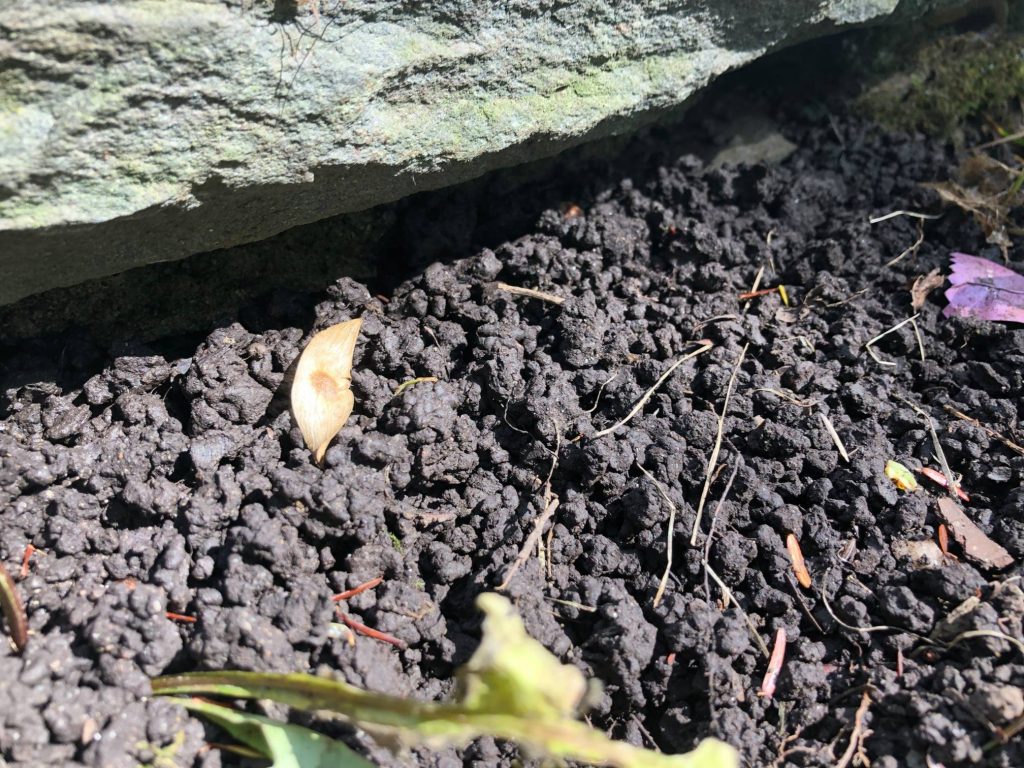Jumping Worms have established a population in Philmont and at High Falls. If you are lucky enough to not have them in your garden, use care when bringing in leaf litter, mulch and compost from outside your property, as this is a common way that they expand their territory. The cocoons can also travel via the treads of shoes, so when hiking in areas like High Falls it can be advisable to clean your shoes before going home.

Once they have arrived, eradication is unfortunately not an option, and you might see the mulch, leaf litter and compost in your garden being consumed by them. They can cause plants and vegetables to suffer and impede seed germination, such as in newly seeded lawns. Treatment with biochar, saponin-based soaps (such as Sal’s Suds), Tea Tree Oil and other options have shown some promise in keeping populations down. Individual worms can be quickly killed with a spritz of isopropyl alcohol or hydrogen peroxide.
If you would like to familiarize yourself with the castings, the Village Green (and Maple Ave generally) is currently an area of heavy activity, with the “ground beef” worm castings heavy along the base of the stone step at the gazebo (see attached photo). The worms themselves are easily recognized by their distinctive white ring, shiny, metallic skin and their distinctive S-shaped (snake-like) way of moving. If you try to pick them up or poke them, they will squirm and thrash energetically and might fly out of your hands.

“Jumping Worms are especially concerning as they devour organic matter more rapidly than other earthworms, stripping the forest of the layer critical for seedlings and wildflowers. Jumping worms grow twice as fast, reproduce more quickly and can infest soils at high densities. In areas of heavy infestation, native plants, soil invertebrates, salamanders, birds and other animals may decline. Jumping worms can severely damage roots of plants in nurseries, gardens, forests and turf. They, along with other invasive worms, can also help spread invasive plant species by disturbing the soil. Jumping worms are widespread across much of the Northeast, Southeast and Midwestern US”
Links to more information:
